Then vs. now: What the world was like when Queen Elizabeth II was coronated in 1953
LONDON - What a difference seven decades have made. The world has changed in unimaginable ways since Queen Elizabeth II was crowned in 1953.
The queen died Thursday surrounded by family at Balmoral castle in Scotland.
When 25-year-old Princess Elizabeth was proclaimed queen on Feb. 6, 1952, the British Empire stretched across the world, royalty was widely revered, and televisions were still a novelty item. On June 2, 1953, Elizabeth’s coronation at Westminster Abbey was the first time most people had watched an event live on television. Millions around the world saw the ceremony on TV, outnumbering the radio audience for the first time.
The world has undergone profound changes since then and so has the monarchy. Queen Elizabeth II’s empire shrank, then crumbled. While most people in Britain remain loyal to the queen and respect her years of service to the nation, attitudes about the monarchy have swung from unquestioning deference to scrutiny. In the 1980s, Princess Diana brought global star power to the House of Windsor, but also ushered in an era in which the royal family was forced to negotiate an uneasy relationship with the media.
READ MORE: What happens when the queen dies? All about Prince Charles’ succession, accession and coronation
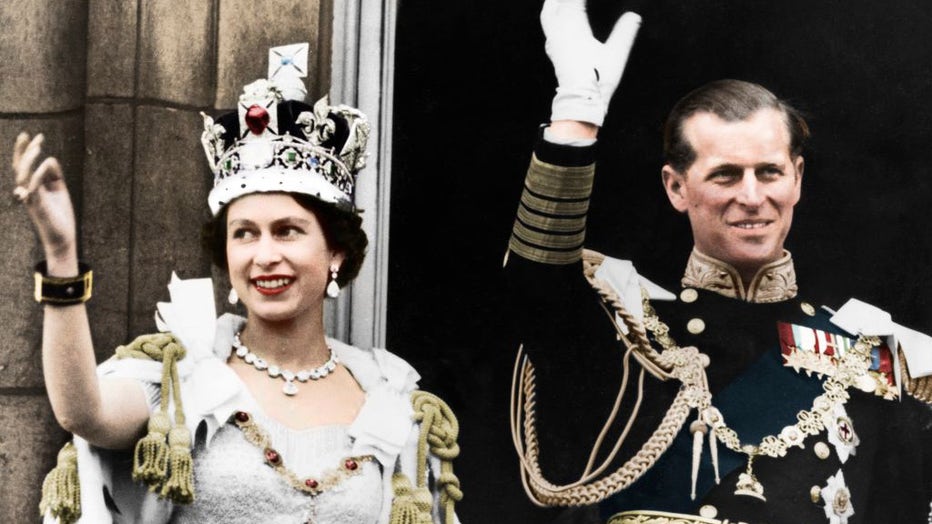
Queen Elizabeth II and the Duke of Edinburgh on the day of their coronation, Buckingham Palace, 1953. (Colorised black and white print). Artist Unknown. (Photo by The Print Collector/Getty Images)
Gas prices averaged 21 cents per gallon in 1953
According to the Office of Energy Efficiency and Renewable Energy, gas prices averaged 21 cents per gallon in the United States.
Today, the price of gas is famously a pain point for many in the U.S. The national average was $3.75 per gallon as of Sept. 8, according to AAA. That’s down from a record high national average of over $5 a gallon in June.
READ MORE: Monarchies around the world: The U.K., a diarchy, and the uniqueness of Vatican City
Officials blame the rise on inflation but note gas prices have fluctuated greatly over the decades. They cite the U.S. embargo of oil from Iran in the early 1980s that caused gas prices to soar. Gas prices continued to rise between 2002 and 2008 but then fell rapidly during the subsequent economic recession. The rose and dipped again during the COVID-19 pandemic lockdown and rose again during the Russian invasion of Ukraine.
Home prices are 50 times higher than they were when Queen Elizabeth took the throne
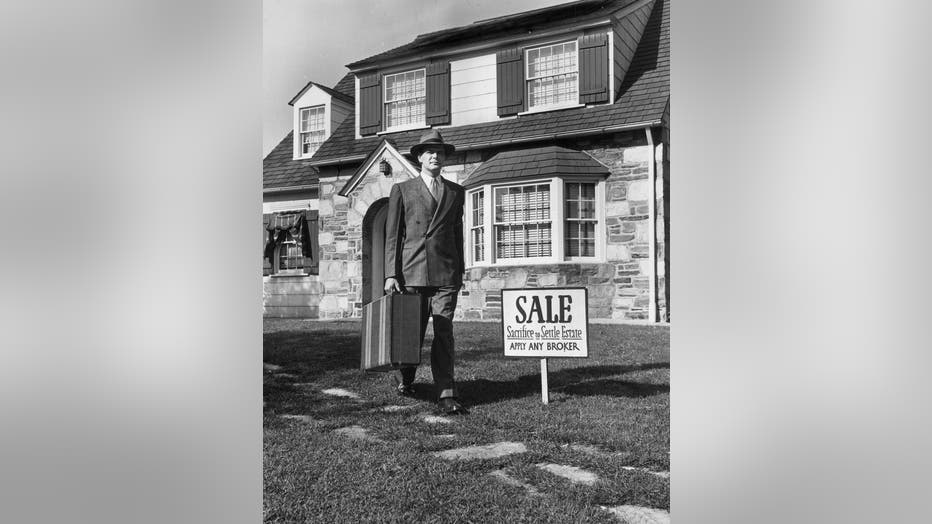
circa 1955: A real estate agent carries a suitcase while walking across the front lawn of a house displaying a 'SALE: Sacrifice to Settle Estate/ APPLY ANY BROKER' sign. (Photo by Lambert/Getty Images)
According to the Chicago Tribune, the household median income in the U.S. in 1950 was $2,990 — roughly 40% of the median home value of $7,354 at the time based on census data.
Today, Zillow reports the typical home value of homes in the U.S. is $355,852 as of July 2022. The median price is $413,500 as of August 2022, according to the National Association of Realtors. It’s the first time the median price has surpassed $400,000.
Cars were under $4,000
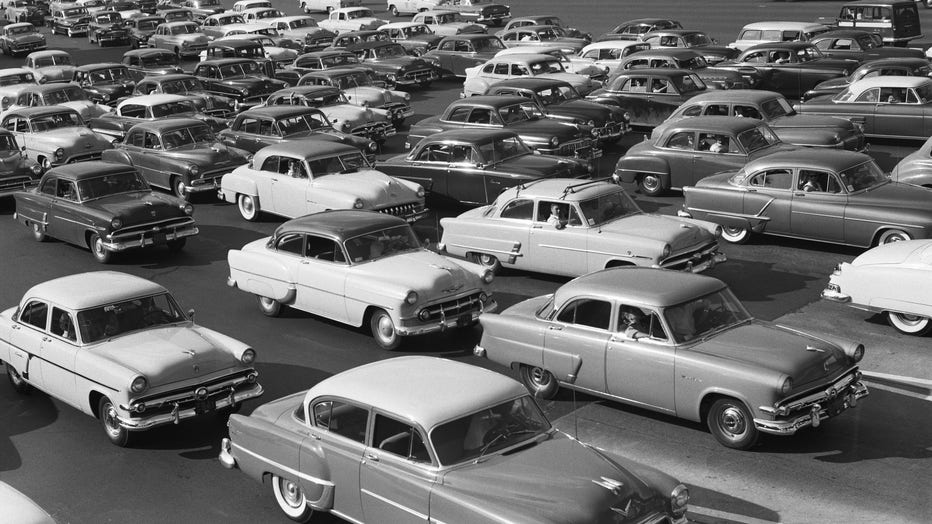
Multi-lane highway traffic jam. (Photo by H. Armstrong Roberts/Retrofile/Getty Images)
In 1953, the average price of a new vehicle in the U.S. was just under $4,000, according to Go Banking Rates. The average price paid for a new vehicle was the highest on record in July at $48,182, up 12% from the prior-year period
That’s a far cry from today’s average, which creeped up to a whopping $48,182 in July — up 12% from 2021. Drivers searching for non-luxury vehicles paid, on average, $875 above sticker price for the same month.
TVs were more expensive
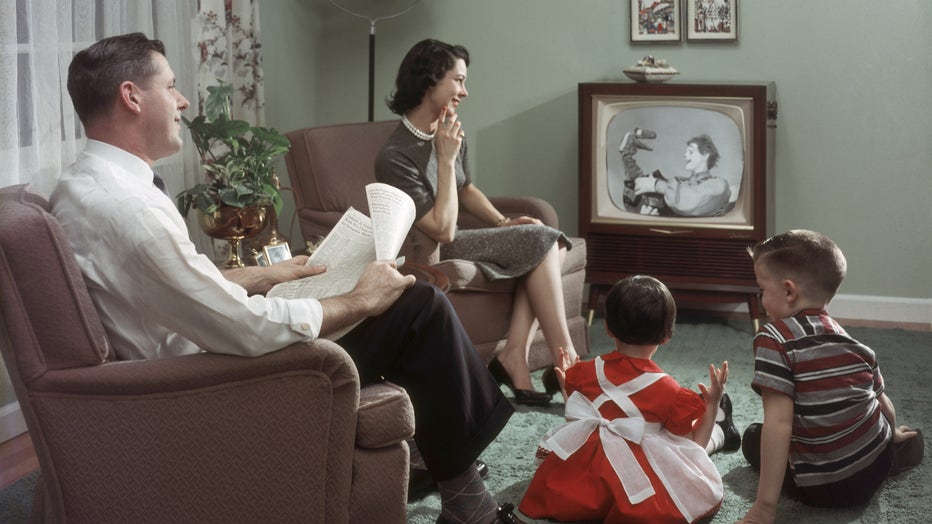
A happy family cheerfully sits in their living room and watches a televisied clown and puppet show, 1957. The father holds an newspaper open to the financial section in his hands. (Photo by Lambert/Getty Images)
The year Queen Elizabeth became queen was also the first year a TV show aired in color in the U.S. Three months later, the first color TV went on sale in New York City. The price was $1,295.
Today, consumers pay about $500, on average, for a new television.
Schools were segregated
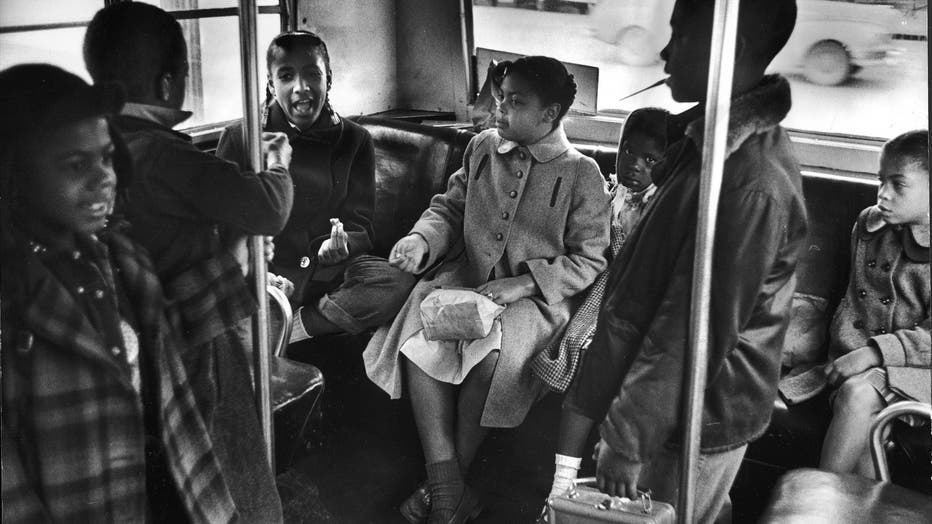
Linda Brown (center) and her sister Terry Lynn (far right) sit on a bus as they ride to the racially segregated Monroe Elementary School, Topeka, Kansas, March 1953. (Photo by Carl Iwasaki/Getty Images)
When Queen Elizabeth was crowned more than 70 years ago, public schools in the United States were still operating under the "separate but equal" doctrine that allowed segregation in schools. It wasn’t until a year later in 1954 that the U.S. Supreme Court outlawed segregation, but it would take another 14 years for most schools to completely desegregate.
In 2016, the Cleveland, Mississippi school district became the last district in the nation to desegregate after a federal judge ruled that it had to.
College tuition
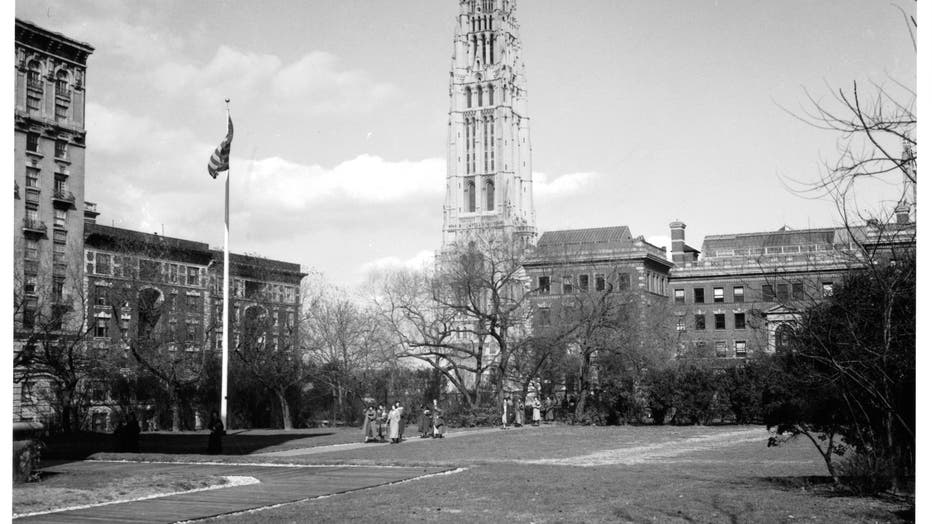
A campus view of Barnard College, a private women's liberal arts college and a member of the Seven Sisters and affiliated with Columbia University in New York City, New York, 1955. (Photo by R. Gates/Archive Photos/Getty Images)
According to the University of Pennsylvania, students there paid between $700 and $850 a year in tuition in 1953, plus a "general fee" of about $75 and $50 for books. If you wanted room and board, that was an additional $835.
As of August 2022, the average cost of in-state tuition was $9,377 a year, according to the Education Data Initiative. That number rose to $27,091 for out-of-state tuition. With fees, books and daily living expenses, the average cost of a year of college in America is $35,551.
Food prices

(Photo by Daily Mirror/Mirrorpix/Getty Images)
In 1953, two tall cans of milk would set you back a quarter. A loaf of rye bread was 29 cents, and a head of iceberg lettuce was 6 cents.
Today, a gallon of whole milk costs, on average, $4.38, according to the USDA, and a loaf of bread averages $1.72. In July, Whole Foods was reportedly selling some loaves of artisanal bread for more than $10 a loaf.
Stamps
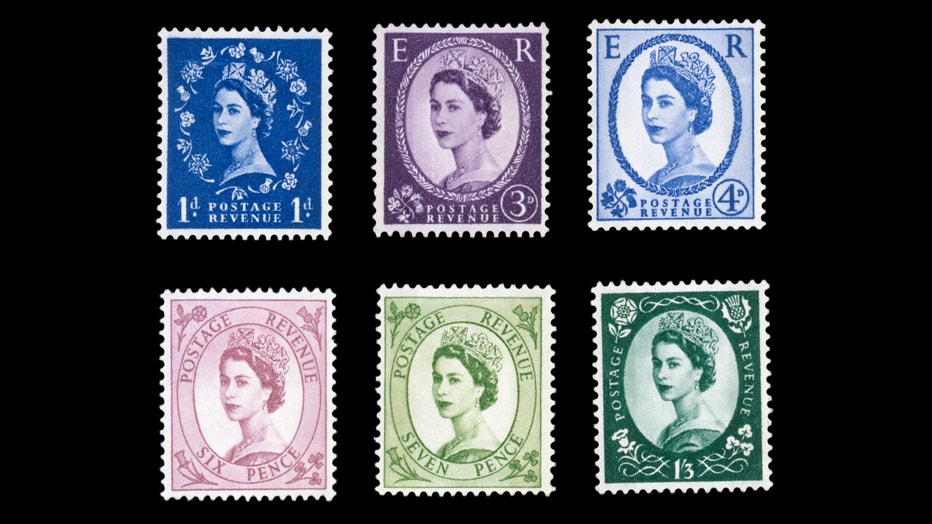
Postage stamps from the series honouring Queen Elizabeth II (born 1926), 1967-1970. United Kingdom, 20th century. London, National Postal Museum United Kingdom (Photo by DeAgostini/Getty Images)
When Elizabeth became queen, you could mail a letter for 3 cents. Today, a stamp costs 60 cents.
Plane tickets
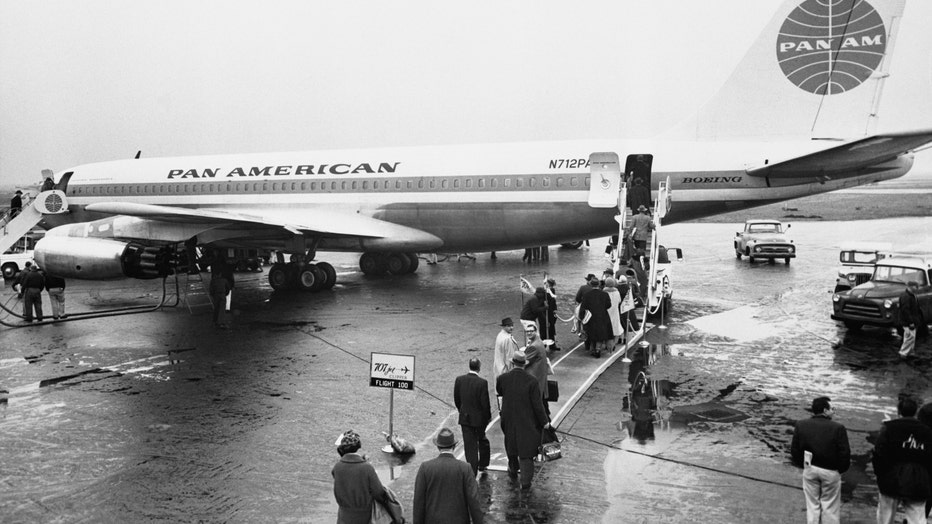
Complete Caption in Negative Sleeve From Pan American World Airways. New York International Airport, NY.
Much like televisions, air travel has gotten cheaper — and better — over the years. In the 1950s, a one-way flight from Los Angeles to Kansas City was listed at $68, according to Gizmodo. That’s about $710 in 2022 adjusted for inflation.
Today, a quick Google search will find the same flight for as little as $69.
The Associated Press contributed to this report.


